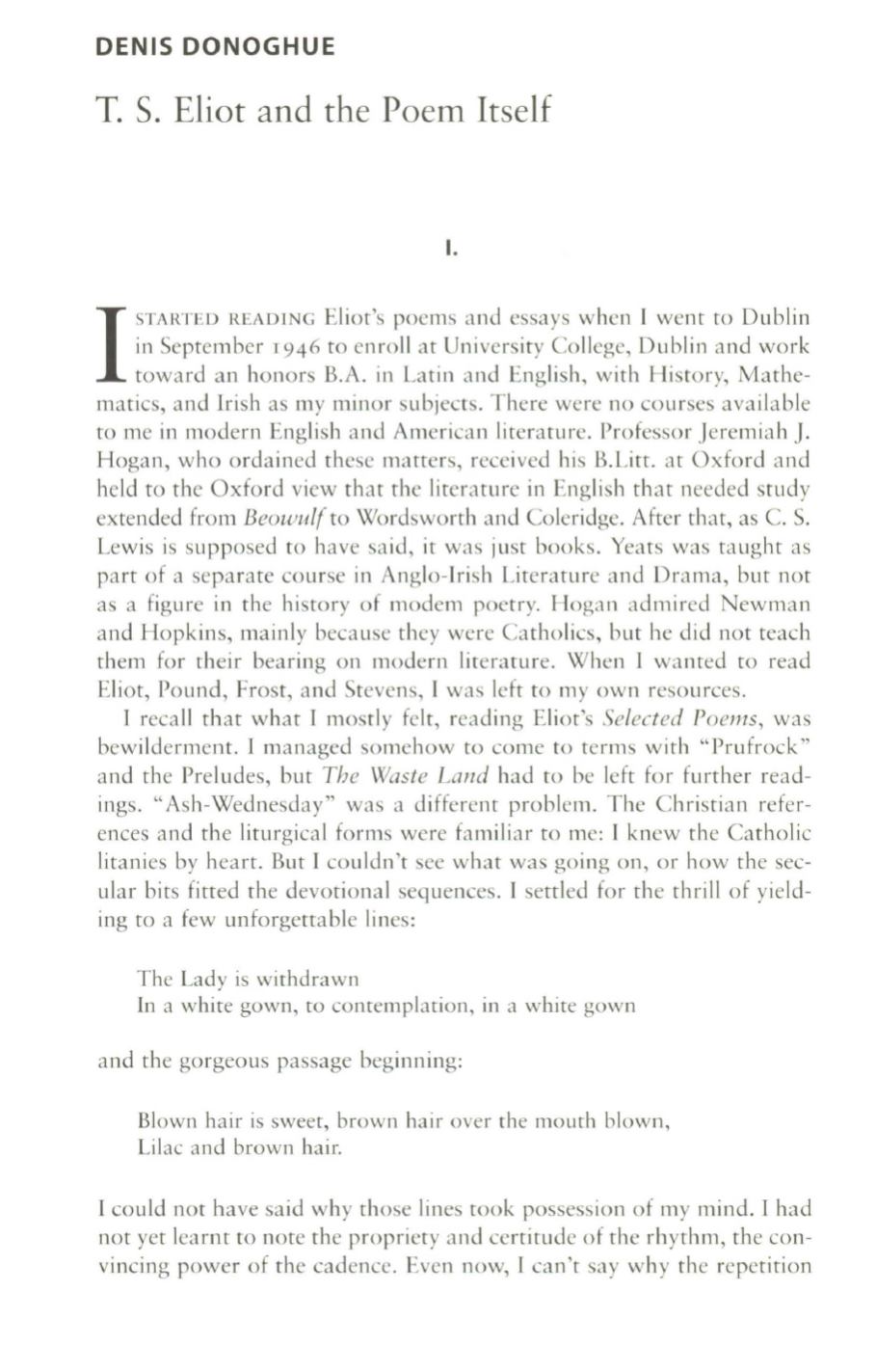
DENIS DONOGHUE
T. S. Eliot and the Poem Itself
I.
I
STARTED READING
Eliot's poems and essays when I went to Dublin
in September
j
946 to enroll at University College, Dublin and work
toward an honors B.A. in Latin and English, with History, Mathe–
matics, and Irish as my minor subjects. There were no courses available
to me in modern English and American literature. Professor Jeremiah
J.
Hogan, who ordained these matters, received his B.Litt. at Oxford and
held to the Oxford view that the literature in English that needed study
extended from
Beowulf
to Wordsworth and Coleridge. After that, as
C.
S.
Lewis is supposed to have said, it was just books. Yeats was taught as
part of a separate course in Anglo-Irish Literature and Drama, but not
as a figure in the history of modem poetry. Hogan admired Newman
and Hopkins, mainly because they were Catholics, but he did not teach
them for their bearing on modern literature. When I wanted to read
Eliot, Pound, Frost, and Stevens, I was left to my own resources.
I recall that what I mostly felt, reading Eliot's
Selected Poems,
was
bewilderment. I managed somehow
to
come to terms with "Prufrock"
and the Preludes, but
The Waste Land
had to be left for further read–
ings. "Ash-Wednesday" was a different problem. The Christian refer–
ences and the liturg ical forms were fami liar to me: I knew the Catholic
litanies by heart. But I couldn't see what was going on, or how the sec–
ular bits fitted the devotional sequences. I settled for the thrill of yield–
ing to a few unforgettable lines:
The Lady is withdrawn
In a white gown, to contemplation, in a white gown
and the gorgeous passage beginning:
Blown hair is sweet, brown hair over the mouth blown,
Lilac and brown hair.
I could not have said why those lines took possession of my mind. I had
not yet learnt to note t he propriety and certitude of the rhythm, the con–
vincing power of the cadence. Even now, I can't say why the repetition


